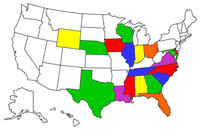Hi All,
I am new to the world of homebuilts/experimentals. My question is, if I build a a homebuilt from kit, what are the requirements for it to be legal for IFR operations? Is it the same as a normal certificated aircraft? As in just equipment? Or are there some homebuilts that are not acceptable to the FAA for IFR ops no matter the installed equipment?
Thanks!



 Reply With Quote
Reply With Quote


